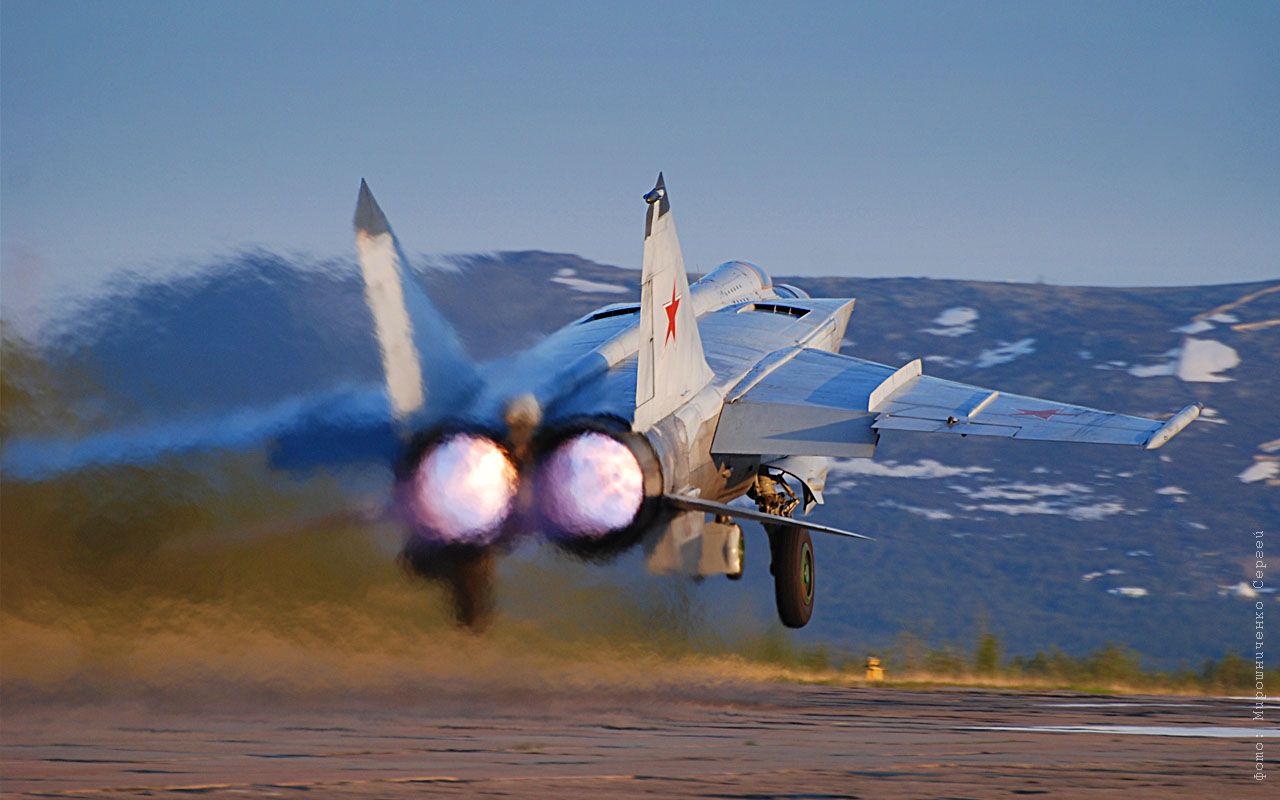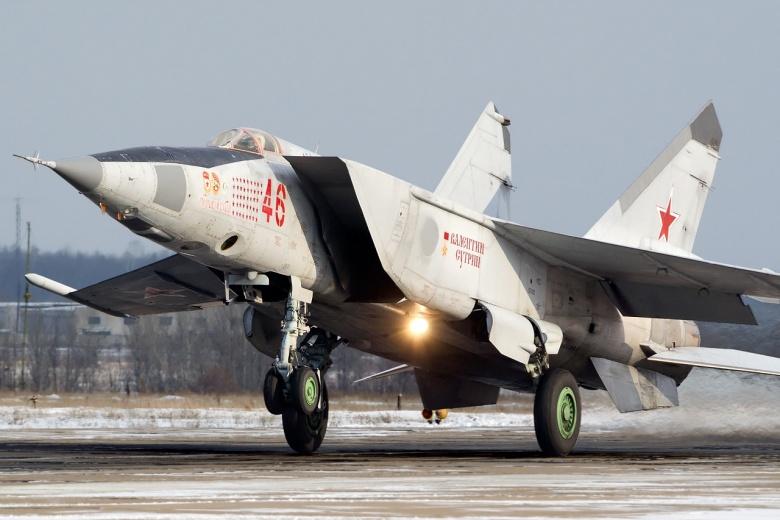
MiG-25 ‘Foxbat’One of the flagship interceptors of the Soviet PVO (Air Defence Forces) is the MiG-25. This aircraft was historically and technically very important for the Soviet Union as it represented a significant leap in aviation standards, climbing faster (20,000ft in 2 min 49.8 sec), higher (123,520ft) and flying faster (2,981.5 km/h) than any other aircraft. In all 29 records were claimed, several of which still stand today after being set in the 1970’s. The Foxbat was designed to intercept American nuclear armed strategic bombers in the vast spaces of the Soviet arctic; it needed to be fast, fly high and shoot at long range with a powerful radar. It did not need to engage in air to air combat with other fighters and it did not have to drop bombs. Another role evolved because of the aircrafts characteristics, that of defeating American Strategic Reconnaissance /assets such as the SR-71 Blackbird, and also of conducting reconnaissance of their own.
The development and initial fielding of the MiG-25 was shrouded in much secrecy and uninformed debate, this was dispelled with the defection of a pilot and aircraft to Japan in 1976. The defection, subsequent inspection and analysis by the US and ongoing issues with the original aircraft led to a major redesign. The result was the version in use in 1994; the MiG-25PD starting in production in 1979 and the upgraded original aircraft the MiG-25PDS. NATO calls both of these aircraft the Foxbat-E.
In the Soviet military the Foxbat as an interceptor is almost exclusively used by the PVO, although some reconnaissance and strike variants were used the VVS. The initial ‘R’ or reconnaissance version evolved into the ‘RB’ or strike reconnaissance version. The ‘RB’ then morphed into several derivatives mostly of the ELINT (Electronic Intelligence), and SLAR (Side Looking Airborne Radar).
The other main derivative is the ‘BM’ which focused on SEAD (Suppression of Enemy Air Defence), using long range anti-radiation missiles.
MiG-25RB Foxbat-B: The reconnaissance/bomber version, but the Foxbat-B designation covers 5 other sub-variants. In total the Soviet Union operates about 80 of these aircraft. (‘RB’, ‘RBV’, ‘RBT’, ‘RBN’ ‘RR’ or ‘RBK’)
MiG-25PU/RU Foxbat-C: Two seat training versions for the interceptor and the reconnaissance/strike versions. About 80 are in service.
MiG-25RBK Foxbat-D: Four different variants of ELINT or SLAR types. About 20 are in use. (‘RBK’, ‘RBF’, ‘RBS’ or ‘RBSh’,
MiG-25PD/PDS Foxbat-E: The main variant of this aircraft is the interceptor. This version had improved engines, a Pulse-Doppler radar, four long range R-40 (AA-6 ‘Acrid’) or two R-40 and two short range R-60 (AA-8 ‘Aphid’) missiles and an IRST (Infra-Red Search & Track) system. The PVO uses 450 of the original Foxbat-A upgraded to the ‘PDS’ Foxbat-E standard as well as 650 new build ‘PD’ airframes.
MiG-25BM Foxbat-F: About 100 of the SEAD specialized aircraft are in use, able to fire the Kh-58 (AS-11 ‘Kilter’) or Kh-31 (AS-17 ‘Krypton’) anti-radiation missiles.
